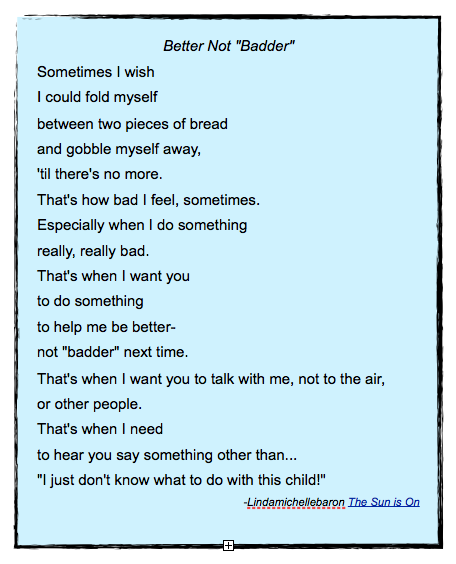
This piece was originally posted on Powerful Learning Practice’s Voices from the Learning Revolution blog. Visit Voices and be inspired!
“The principalship is the kind of job where you’re expected to be all things to all people.” (Fullan, 2001)
“Wanted: A miracle worker who can do more with less, pacify rival groups, endure chronic second-guessing, tolerate low levels of support, process large volumes of paper and work double shifts (75 nights a year). He or she will have carte blanche to innovate, but cannot spend much money, replace any personnel, or upset any constituency.” (Evans, 1995)
“At the present time the principalship is not worth it, and therein lies the solution. If effective principals energize teachers in complex times, what is going to energize principals?” (Fullan, 2001)
Not worth it. That is a pretty significant phrase, but one that I don’t believe most administrators find true. I would like to instead address Fullan’s question, “What is going to energize principals?” One possible answer? Connected learning.
I experienced some feelings of isolation my first year in the classroom, as my assignment was in a small, rural school where I was the only sixth grade teacher. The feeling of not having readily available help that first year pales in comparison to the isolation I felt in my first year of the principalship. Add to that the increasing demands Fullan describes, and the rate at which administrators are expected to lead change, and the complexity of our role increases hundredfold.
An administrator has the option of seeking guidance from a principal colleague or central office administrator, although there are times when doing so could cause the principal to feel fearful that she is exposing a weakness or lack of judgment. She instead turns inward for solutions, for explanations, until the isolation compounds and the day-to-day management tasks overwhelm the true leadership that should be prominent in her work.
As administrators, we expect our teachers to collaborate, cooperate, and continue to learn. We ask the same of our students. Why should we hold ourselves to a different, even lesser, standard? I believe assuming the role of lead learner in our school community is one of the most imperative roles we can play.
Harnessing the power of social media
We live in a time where the tools and technologies we are afforded have flattened our world. Principals and school leaders now have a vast array of options for learning and connecting with others. I have experienced the very real benefits of time invested in developing my own personal learning network, utilizing the Web and social media tools.
By harnessing the power of social media, principals can take advantage of improved organizational efficiency, solidify and broaden communications, serve as lead learner, and develop relationships that will ultimately build an organization’s capacity and benefit children. Our students will be expected to enter adulthood as critical thinkers, problem solvers, and collaborative, productive team members. We must model the power of digitally enhanced learning for them, for our teachers, and for the community.
We must connect. If you’re capable of connecting and learning from those in your physical realm, consider the power of building relationships with other inspiring educators from around the world. Too often we think: how could that person’s experiences help me when their schools and circumstances differ so greatly from mine? That’s precisely the reason we can learn so much from one another. I have as much to learn from a high school principal in an urban school setting as I do from an elementary principal in a neighboring district. The varied perspectives are invaluable.
So, where can an administrator find these connections? For me and many others, Twitter has been the main vehicle through which we’ve built a network of professional learners. This article can help you get started, and I personally am willing to help any interested administrator embark on this journey! The blog Connected Principals was essentially born out of the relationships built around conversations on Twitter. George Couros, recognizing the valuable contributions stemming from our online discussions, decided to create a common space for administrative bloggers, to bring us together and unite our voices under a shared purpose. I know that if I ever need advice, ideas for projects or resources, or just someone willing to let me vent, I can go to any of my Connected Principals colleagues who will be there for me with a supportive, critical voice.
We must share. As a starting point, consider the simple benefits of using shared, digital spaces such aswikis to organize and exchange information with staff. Respect your teachers’ time by only holding a faculty meeting when there is an agenda item worth true discussion. Empower your teachers to be wiki contributors so they can add information of their own. Stop the insanity of searching aimlessly through email inboxes to try to find that tidbit of information someone mass-emailed two weeks ago! Do you and others often locate great resources to share? Use Diigo or a similar social bookmarking site to share and even annotate those resources in a streamlined, organized manner. Collaborate on projects usingGoogle Docs. No longer do precious minutes have to be wasted in meetings if project authors can work in a common digital space and contribute at times that best suit them.
We must build community. Communications with families and community members are vital to the success of any school and can be powered up through the use of social media. Consider the advantages of writing about school successes in a public blog or Facebook page regularly, highlighting the wonderful accomplishments of students and staff. Social media affords principals the opportunity to develop forums where community voices can be heard and valued. The benefits of managing public relations before outside sources distort the facts are innumerable, and the platforms through which these communications can occur are, for the most part, free to use!
We must be transparent. Are you transparent in your learning? Would you like to be? What does transparency entail? For one, allow your teachers and students to see that you value your own learning. Have you ever discussed with a teacher how a book or article you’ve read could impact classroom practice? If so, you’re comfortable with sharing your learning in a local forum, so consider branching out to share your ideas with other interested parties. Blogging is a great first step to becoming a producer, not just a consumer, of information. Simply take the thoughts you’d normally converse about and compose a post! Posterous, WordPress, and Blogger are all user-friendly platforms and ideal for the beginning blogger.
Keep in mind that there are no right or wrong ways to express one’s feelings and share knowledge. New bloggers often ponder, “Who really wants to read what I have to say?” “What if someone doesn’t agree with what I write?” Begin blogging as a personal form of reflection, to help you examine your decision-making processes and actions as principal. Read other educators’ blogs. Subscribe to RSS feeds and organize the flow of new ideas with Google Reader. Comment and include links to your own writing to develop a readership. Get to know the other educators you’re connecting with. Learn about their philosophies, and let the shared wisdom you discover help guide your work.
Principals leading the way
The role of the principal is definitely worth it. It’s a role that should, first and foremost, be about sharing, building relationships and community, and connecting for learning. Principals need to ensure they are modeling and building capacity in the most efficient and meaningful ways possible. We need to embrace, not ignore, the tools we now have available to build powerful learning communities. We are faced with a compelling need for change, and we owe it to our children to lead the way in bringing connected, enhanced, and authentic learning opportunities to our schools, communities, and world.
Evans, C. (1995) ‘Leaders wanted’, Education Week. Fullan, M. (2001). The new meaning of educational change. Teachers College Press.


